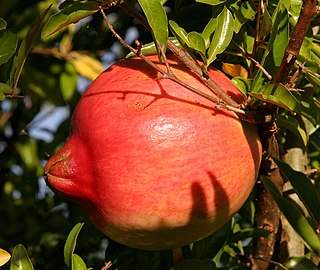
Punica is a small genus of fruit-bearing deciduous shrubs or small trees in the flowering plant family Lythraceae. The better known species is the pomegranate. The other species, the Socotra pomegranate, is endemic to the island of Socotra. It differs in having pink flowers and smaller, less sweet fruit.
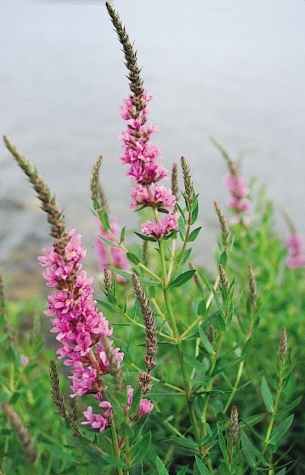
Lythraceae is a family of flowering plants, including 32 genera, with about 620 species of herbs, shrubs, and trees. The larger genera include Cuphea, Lagerstroemia (56), Nesaea (50), Rotala (45), and Lythrum (35). It also includes the pomegranate and the water caltrop. Lythraceae has a worldwide distribution, with most species in the tropics, but ranging into temperate climate regions as well.

The Arctiinae are a large and diverse subfamily of moths with around 11,000 species found all over the world, including 6,000 neotropical species. This subfamily includes the groups commonly known as tiger moths, which usually have bright colours, footmen, which are usually much drabber, lichen moths, and wasp moths. Many species have "hairy" caterpillars that are popularly known as woolly bears or woolly worms. The scientific name Arctiinae refers to this hairiness. Some species within the Arctiinae have the word "tussock"' in their common names because they have been misidentified as members of the Lymantriinae subfamily based on the characteristics of the larvae.

The Salicornioideae are a subfamily of the flowering plant family Amaranthaceae. Important characters are succulent, often articulated stems, strongly reduced leaves, and flowers aggregated in thick, dense spike-shaped thyrses. These halophytic plants are distributed worldwide. Many are edible
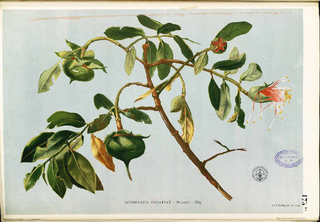
Sonneratiaceae were a family of flowering plants placed in the order Myrtales by the Cronquist system. They consisted of two genera, Sonneratia and Duabanga. These are now generally placed in their own monotypic subfamilies of the family Lythraceae, making Sonneratiaceae superfluous.

Sonneratia is a genus of plants in the family Lythraceae. Formerly the Sonneratia were placed in a family called Sonneratiaceae which included both the Sonneratia and the Duabanga, but these two are now placed in their own monotypic subfamilies of the family Lythraceae. The genus was also named Blatti by James Edward Smith, but Sonneratia had botanical nomenclature priority. Sonneratia species are mangrove trees. The germination is viviparous.
In phylogenetics, basal is the direction of the base of a rooted phylogenetic tree or cladogram. The term may be more strictly applied only to nodes adjacent to the root, or more loosely applied to nodes regarded as being close to the root. Note that extant taxa that lie on branches connecting directly to the root are not more closely related to the root than any other extant taxa.

ATP-binding cassette transporter sub-family C member 8 is a protein that in humans is encoded by the ABCC8 gene. ABCC8 orthologs have been identified in all mammals for which complete genome data are available.

The euphyllophytes are a clade of plants within the tracheophytes. The group may be treated as an unranked clade, a division under the name Euphyllophyta or a subdivision under the name Euphyllophytina. The euphyllophytes are characterized by the possession of true leaves ("megaphylls"), and comprise one of two major lineages of extant vascular plants. As shown in the cladogram below, the euphyllophytes have a sister relationship to the lycopodiophytes or lycopsids. Unlike the lycopodiophytes, which consist of relatively few presently living or extant taxa, the euphyllophytes comprise the vast majority of vascular plant lineages that have evolved since both groups shared a common ancestor more than 400 million years ago. The euphyllophytes consist of two lineages, the spermatophytes or seed plants such as flowering plants (angiosperms) and gymnosperms, and the Polypodiophytes or ferns, as well as a number of extinct fossil groups.

The Cichorioideae are a subfamily of the family Asteraceae of flowering plants. Familiar members of Cichorioideae include lettuce, dandelions, chicory and Gazania species. The subfamily comprises about 240 genera and about 2900 species. It is heterogeneous and hard to characterize except with molecular characters.
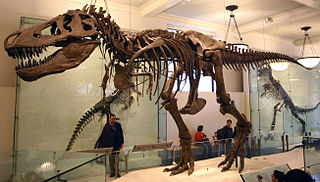
Tyrannoraptora is a clade defined as "all descendants of the last common ancestor of Tyrannosaurus rex and Passer domesticus ". The clade was named in 1999 by the American paleontologist Paul Sereno, though in his original concept had Tyrannosauroidea being the sister taxon to Pennaraptora. Phylogenetic analyses have since, however, found the group also encompasses Compsognathidae, Ornithomimosauria, Alvarezsauroidea, and Therizinosauria. Thus tyrannoraptorans are divided into tyrannosauroids and maniraptoromorphs.

Cercidoideae is a subfamily in the pea family, Fabaceae. Well-known members include Cercis (redbuds), including species widely cultivated as ornamental trees in the United States and Europe, Bauhinia, widely cultivated as an ornamental tree in tropical Asia, and Tylosema, a semi-woody genus of Africa. The subfamily occupies a basal position within the Fabaceae and is supported as monophyletic in many molecular phylogenies. At the 6th International Legume Conference, the Legume Phylogeny Working Group proposed elevating the tribe Cercidae to the level of subfamily within the Leguminosae (Fabaceae). The consensus agreed to the change, which was fully implemented in 2017. It has the following clade-based definition:
The most inclusive crown clade containing Cercis canadensisL. and Bauhinia divaricataL. but not Poeppigia proceraC.Presl, Duparquetia orchidaceaBaill., or Bobgunnia fistuloides(Harms) J.H.Kirkbr. & Wiersema.
Stenothecidae is an extinct family of fossil univalved Cambrian molluscs which may be either gastropods or monoplacophorans.
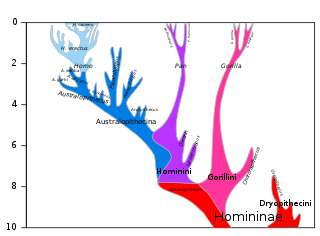
The chimpanzee–human last common ancestor (CHLCA) is the last common ancestor shared by the extant Homo (human) and Pan genera of Hominini. Due to complex hybrid speciation, it is not currently possible to give a precise estimate on the age of this ancestral population. While "original divergence" between populations may have occurred as early as 13 million years ago (Miocene), hybridization may have been ongoing until as recently as 4 million years ago (Pliocene).

Sequoioideae, popularly known as redwoods, is a subfamily of coniferous trees within the family Cupressaceae. It includes the largest and tallest trees in the world.
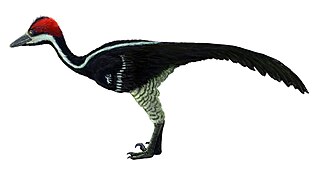
Troodontinae is a subfamily of troodontid dinosaurs. The subfamily was first used in 2017 for the group of troodontids descended from the last common ancestor of Gobivenator mongoliensis and Zanabazar junior, but has been redefined to be the least inclusive clade containing Saurornithoides mongoliensis and Troodon formosus, utilizing the type species of the clade.

Agroecomyrmecinae is a subfamily of ants containing two extant and two fossil genera. The subfamily was originally classified in 1930 by Carpenter as Agroecomyrmecini, a Myrmicinae tribe. Bolton raised the tribe to subfamily status in 2003, suggesting that Agroecomyrmecinae might be the sister taxon to Myrmicinae. It has since been discovered to be one of the earliest lineages of ants, a clade from the basal polytomy for all ants. In 2014, the subfamily was expanded to two tribes. The tribe Ankylomyrmini was moved from the subfamily Myrmicinae to Agroemyrmecinae.

Shirleya is an extinct genus in the crape myrtle family, Lythraceae, which contains a single species, Shirleya grahamae. The genus and species are known from Middle Miocene fossils found in Central Washington.
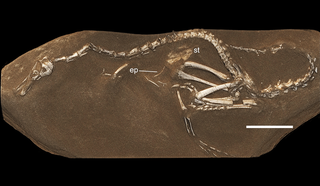
Halszkaraptorinae is a basal ("primitive") subfamily of Dromaeosauridae that includes the enigmatic genera Halszkaraptor, Natovenator, Mahakala, and Hulsanpes. Halszkaraptorines are definitively known only from Late Cretaceous strata in Asia, specifically in Mongolia. Following the recent discovery of Natovenator, a member of the subfamily, the group is confirmed to have a semiaquatic lifestyle.
The Pteridophyte Phylogeny Group, or PPG, is an informal international group of systematic botanists who collaborate to establish a consensus on the classification of pteridophytes that reflects knowledge about plant relationships discovered through phylogenetic studies. In 2016, the group published a classification for extant pteridophytes, termed "PPG I". The paper had 94 authors.
















